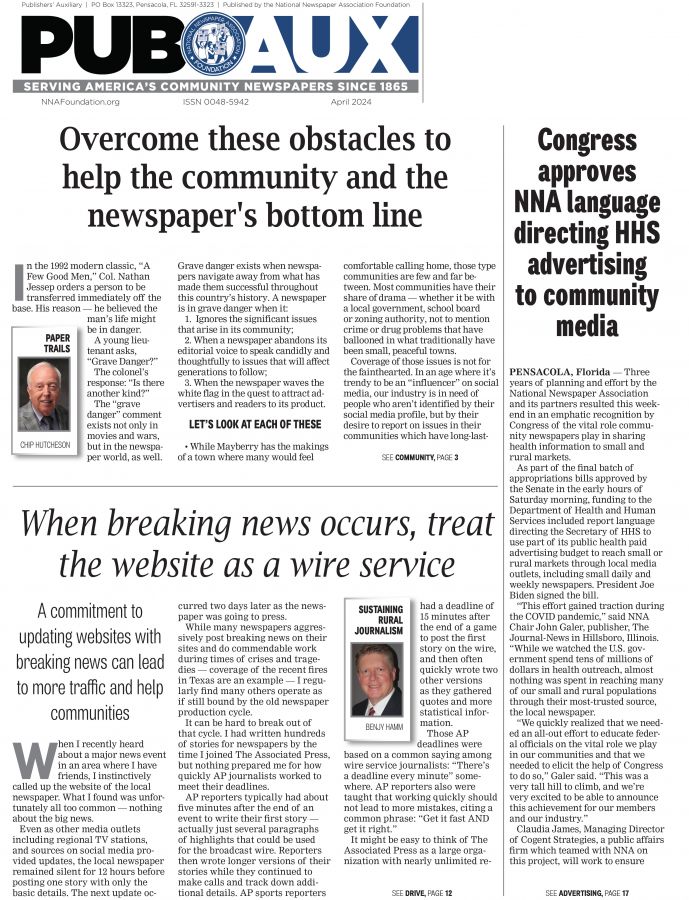Open government is under attack
Feb 25, 2016
By Al Cross
Into the Issues
Underlying most of the issues we cover as journalists is the principle of open government, which is under attack on many fronts. Local governments want state legislatures to weaken public-notice laws; public officials evade open-meetings laws with private conversations; and legislators all over the country are trying to weaken open-records laws. For example, two bills in Florida would eliminate mandatory awards of attorney fees in cases where plaintiffs prove that government officials have violated the state Public Records Law, as we noted on The Rural Blog at http://bit.ly/1Q17PjT.
Journalists and their employers are rightly reluctant to take public stands on issues, but we are in a unique position to have a positive impact by reminding the public of the value of open government. A good time to do that is Sunshine Week, which will be celebrated March 13-19.
The American Society of News Editors and the Reporters Committee for Freedom of the Press have worked with major news organizations, such as The Associated Press, The McClatchy Co. and Tribune News Service to put together a package of enterprise stories, sidebars, an analysis, photos, videos and informational graphics, available on the ASNE, Reporters Committee, AP and Sunshine Week websites. (See information on Page 3.)
The SunshineWeek.org site also has op-eds, editorial cartoons, Sunshine Week logos, open-government story ideas and a newly created list of open-government questions that journalists can ask federal candidates, which The Rural Blog reported at http://bit.ly/20YVFir.
On the federal open-government front, bipartisan efforts continue to improve the Freedom of Information Act. In January, the House sent the Senate a bill that would scale back exemptions to the law and make it easier to use. We reported on it at http://bit.ly/1PFcF52.
Meanwhile, keeping track of what’s going on in Washington has become more difficult as news organizations reduce staff in the capital. More than 20 states have no reporters dedicated full-time to covering their congressional delegations. We updated the Pew Research Center’s annual report on that problem at http://bit.ly/1KpuAxz.
Closer to home, members of the International Society of Weekly Newspaper Editors recently debated, on the list-serve we host for them, whether they should carry guns to public meetings. Barbara Selvin, a journalism professor at Stony Brook University, did a story about it for The Poynter Institute, and we excerpted it at http://bit.ly/1TnGiKt.
More than once, editors on the list-serve have discussed how to handle reporting of suicides, and a recent discussion revealed that the dominance of social media has prompted some editors to be less timid in their coverage. The discussion prompted Brad Martin, editor of the Hickman County Times in Centerville, TN, to write an article for the online Daily Yonder about his coverage of suicide as a public issue, and his involvement in community efforts to prevent it, after his county had six suicides in four months. Suicide rates are 70 percent higher in rural areas than urban ones, according to 2013 data from the Centers for Disease Control and Prevention. The Rural Blog noted that and covered both discussions at http://bit.ly/1PFeM8T.
A growing problem in rural areas is the financial condition of their hospitals. Stories about the problems of rural hospitals led the list of most-read topics on The Rural Blog in 2015. Of the 60 blog posts that were viewed at least 250 times by TRB readers, eight excerpted stories about rural hospitals, and some related items also had high readership. We gave some examples in a Jan. 1 blog item, at http://bit.ly/1R7Q0i6.
Another growing health issue in rural areas is intravenous drug use, evident in increasing numbers of drug overdoses and local epidemics of HIV and hepatitis C. Our latest blog item on the issue is at http://bit.ly/1opAzJ6.
Even in rural areas, some health problems are caused or exacerbated by air pollution. How polluted is your county’s air? If you’re in one of the 25 most polluted states, you can find out from maps compiled by HealthGrove, a site that emphasizes data. The Rural Blog reported on it at http://bit.ly/1SSayie.
The biggest factor in U.S. air pollution, and the nation’s contribution to climate change, is coal-fired power plants. Most rural electric cooperatives are dependent on coal, so they cheered the Supreme Court’s order blocking the Obama administration’s new power-plant rules, while the DC Circuit Court of Appeals considers legal action. Our latest item on the issue is at http://bit.ly/1PQodjG.
County-level maps are a favorite Rural Blog topic. The Center for Food Safety created a map of concentrated animal feeding operations in Michigan, and says it will map CAFOs in any state upon request; see http://bit.ly/1XxtAcF.
Another map, by researchers at the University of Vermont, identified areas where bees are in trouble; see http://bit.ly/1mHaDGY. The recent increase in number of inmates at rural jails is illustrated by a map compiled by the Vera Institute of Justice. We published the map at http://bit.ly/1ooCCwl.
A vast array of data about rural areas is available in Rural America at a Glance, from the Agriculture Department. We noted it at http://bit.ly/1TnGs4J.
If you do or see good work that deserves national notice or could help other rural journalists, by appearing on The Rural Blog, e-mail me at al.cross@uky.edu so we can publish it at irjci.blogspot.com.
Al Cross edited and managed weekly newspapers before spending 26 years at The (Louisville) Courier-Journal and serving as president of the Society of Professional Journalists. Since 2004 he has been director of the Institute for Rural Journalism and Community Issues, based at the University of Kentucky. See www.RuralJournalism.org.







